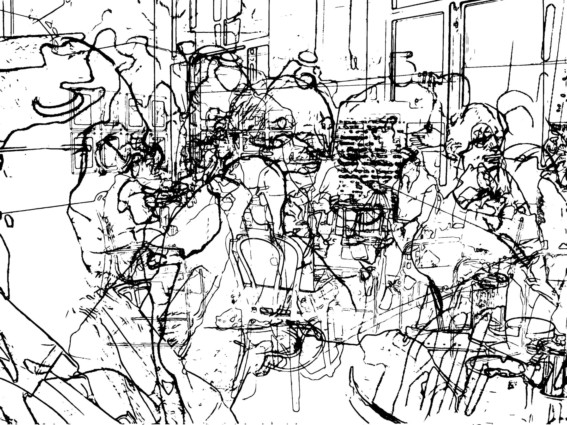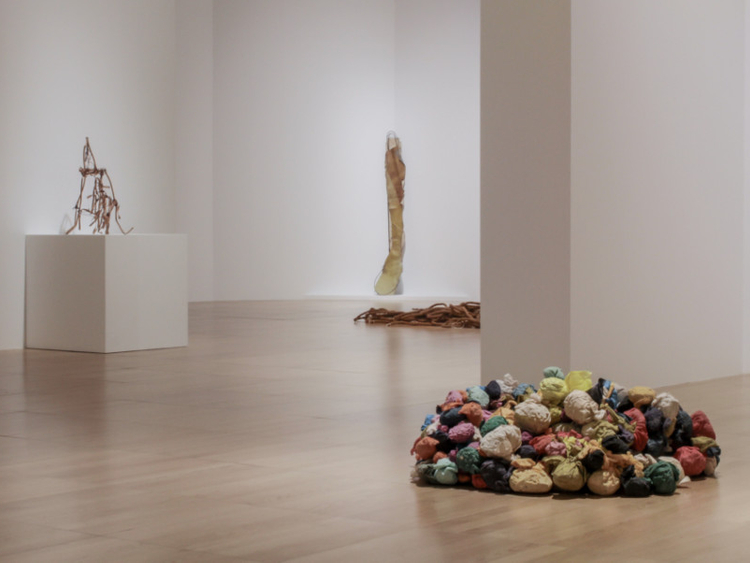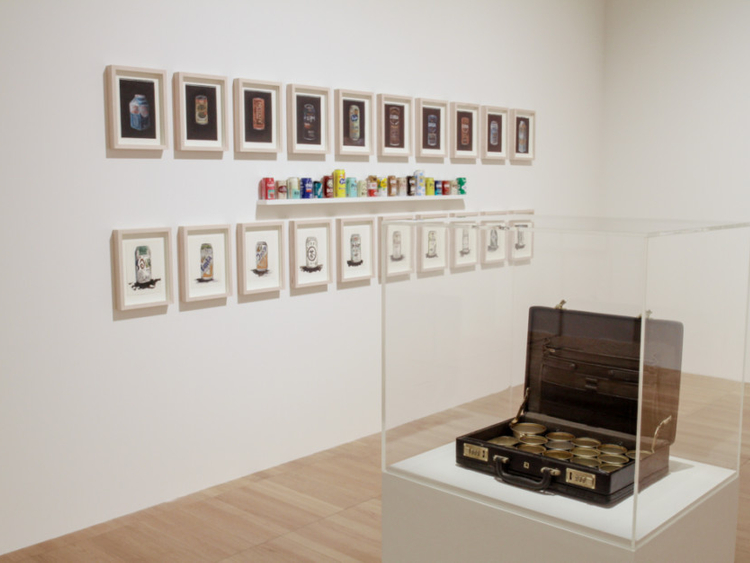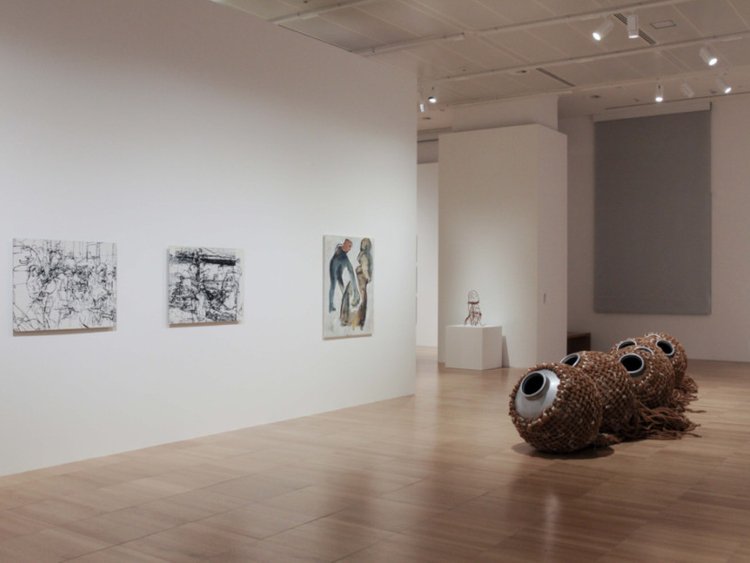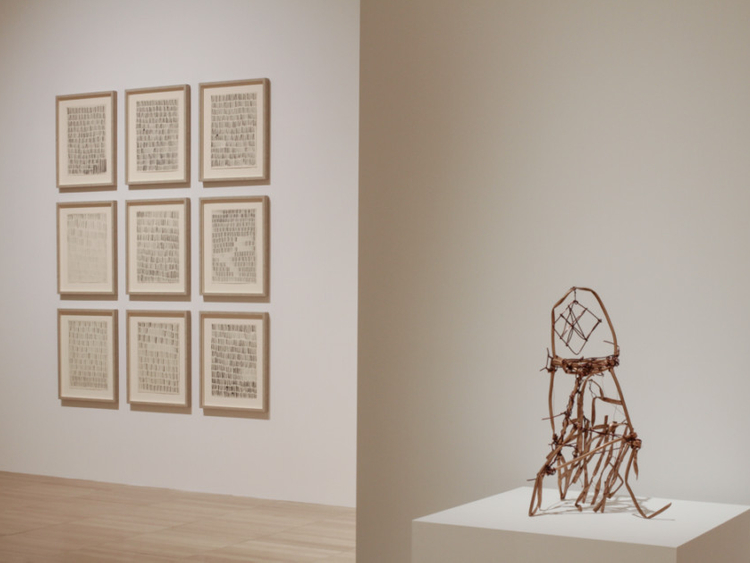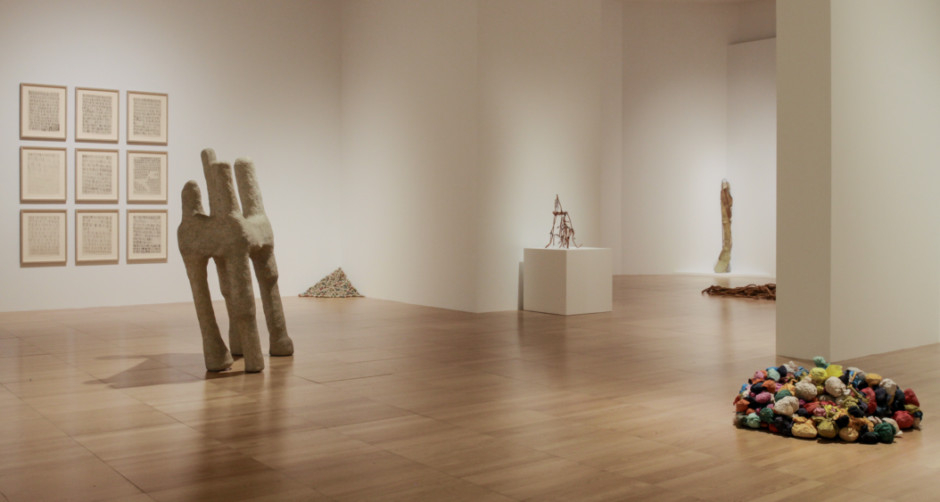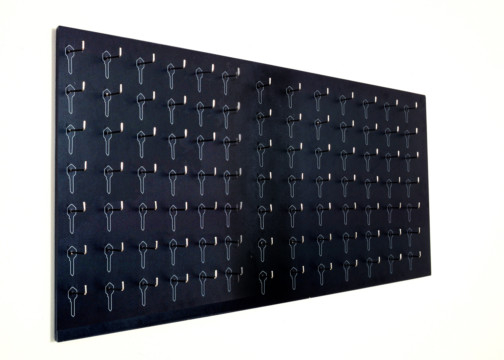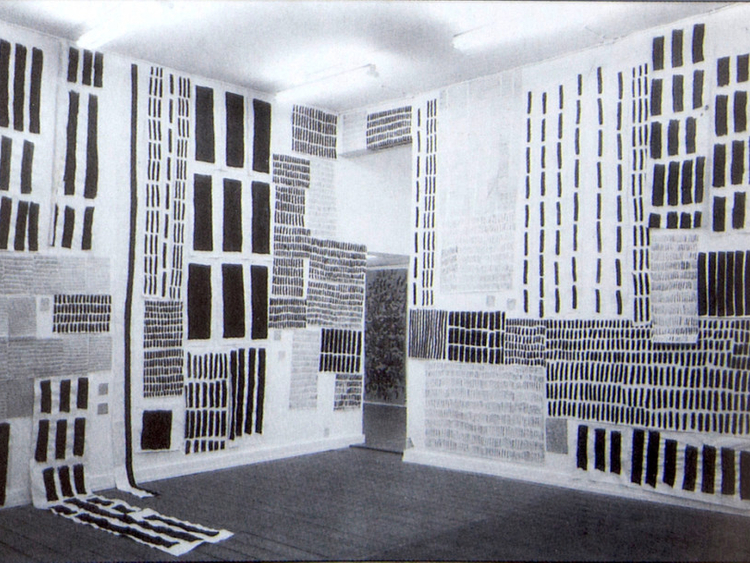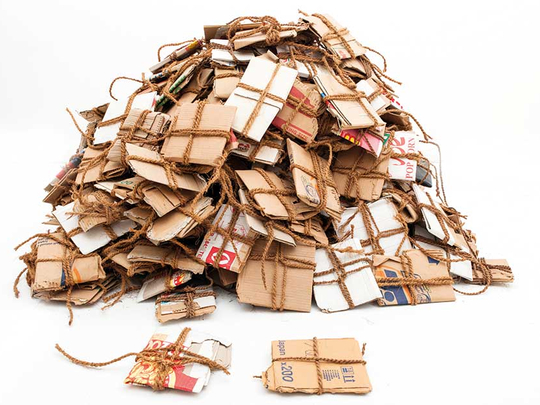
The NYU Abu Dhabi Art Gallery is presenting a landmark exhibition that sheds light on one of the most important artistic communities in the history of the UAE. The show, titled But We Cannot See Them: Tracing a UAE Art Community, 1988-2008, features historic works by Emirati artists Hassan Sharif, Abdullah Al Saadi, Mohammad Ahmed Ibrahim, Mohammad Kazem and Hussain Sharif, who formed the core of the community, and are known as ‘the five’, along with works by Ebtisam Abdulaziz; Dutch artist Jos Clevers and Indian artist Vivek Vilasini, who were also key members of this community.
Together with their fellow writers, poets, filmmakers, actors and musicians, these artists fostered a new culture of encouraging radical, formal and conceptual experimentation. They met regularly on a sand dune between Sharjah and Ajman, which they called ‘the sand palace’, or at Hassan Sharif’s home, to discuss new ideas, to critique each other’s work and to inspire one another. Thus, at a time when the art infrastructure of the UAE was not well developed, this community played a vital role in motivating these artists to continue working, experimenting and evolving.
The show is curated by Maya Allison, founding director and chief curator of the NYUAD Art Gallery, along with exhibitions curator Bana Kattan, and programmes curator Alaa Edris. Their research for the show included in-depth study of the artists’ archives and interviews with various members of this community.
The title of the show is drawn from a poem by poet and filmmaker Nujoom Alghanem, a key early member of the community. It reflects the fact that due to the limited availability of art institutions and venues where these artists could exhibit their work, they remained largely invisible to local and international curators and audiences. This situation changed when in late 2007, some of the artists established the Flying House, a venue dedicated to displaying work from this community, and the UAE announced various initiatives to support the cultural sector.
The exhibition focuses on showing works that were originally shown together at the early shows by this community. It also includes archival material, videos of interviews with members, a curated reading room, and key contributions by Khalid Albudoor, Nujoom Alghanem, Cristiana De Marchi and Adel Khozam. It is accompanied by a book, featuring research and interviews done by the curators. The gallery has also organised a public programme of talks, tours, film screenings and workshops for all ages to compliment the show.
“The trajectory from a small community of artists to a group of well-established figures in the UAE arts scene happened in only a few decades. Today, most of the artists included here have participated in the UAE Pavilion at the Venice Biennale, many are collected by museums, and they continue to develop their individual voices, providing inestimable inspiration for contemporary emerging artists in the UAE. The importance of community and collaboration to their success and longevity cannot be underestimated. During our research into this community of artists, we have found their practices and stories deeply moving and inspiring and we hope that art historians will use the book and this exhibition as a resource to support further study of this pivotal community,” Allison says.
To give visitors a quick overview of the community’s activities and the art environment of the time the curators have created a timeline that traces the journeys of these eight artists through a selection of exhibitions in 14 countries from 1988 to 2008. Beginning with ‘the five’, the timeline weaves in the arrival and departure of Clevers and Vilasini, and the integration of Ebtisam Abdulaziz into the community in 2001. It maps the points of intersection between these artists when they participated together in exhibitions as well as crucial moments in the career or life of individual artists, indicating how each artist grew independently while continuing to be supported by their interconnections with the community.
The exhibition is divided into sections dedicated to each artist but the placement of the works is designed to highlight the dialogue between them. Works by the late Hassan Sharif include his various experiments with materials such as cardboard, coir, pencil shavings and glue, that compelled viewers to think about their surroundings and their notion of art. This section also features the doors from The Flying House, with the artworks covering them giving a good sense of how the artists used every inch of the space to exhibit their work. The interaction within the community is illustrated by Sharif’s painting of a sculpture by Ibrahim, displayed alongside that very sculpture. Similarly, a sculpture Sharif created from discarded wire is a reminder of a series of wiry sculptures Clevers had created for ‘The Six’, a key show by the group in 1996 and resonates with a series of paintings by Clevers, and photographic works by Abdulaziz, displayed in the show.
The Six was Vilasini’s first show with the group and marked his arrival into the community. A sculpture featuring clay pots and coir rope that he exhibited at that show has been recreated for this exhibition along with another sculpture crafted from broken clay pottery.
At the beginning of their careers, Ibrahim and Al Saadi both lived and worked in the library in Khor Fakkan, run by eminent poet Ahmed Rashid Thani. Ibrahim, who is from Khor Fakkan, is known for his land art. He is represented in the show by signature works such as sculptures made from materials found in his environment, paintings featuring his distinctive lexicon of organic forms and lines, his sketchbook from 1988-89, when he began developing this language, and a video of him burning a truck full of his artworks in 1999, which proved to be a liberating moment, and a turning point in his artistic career.
Fujairah-based Al Saadi, also takes inspiration from the landscape, making quick sketches during journeys to the mountains and the desert. The show highlights his penchant for collecting materials from his environment through a series of cases filled with leaves, bugs and other objects that were the subjects of his early drawings. Works from the two years he spent in Japan, from 1994 to 1996, include studies of colourful cans he collected from vending machines, and scroll paintings depicting his life there. Also included are some works from a show he did with Hussain Sharif in 1999.
Like Ibrahim, Al Saadi, and his older brother Hassan Sharif, Hussain Sharif also uses objects gathered from his environment in his installations. An example in the show is a piece where he has embedded detritus found in the streets in cement to create an installation that speaks about urban expansion and its impact on the environment. He was also the only one in the group working with collage and some of his collages with newspapers are presented in the show.
Kazem’s works in the show include early examples of his well-known Directions series, where he uses GPS coordinates to document his rapidly changing environment; and his equally well-known performance pieces inspired by the daily routine of his job in an armed forces office. Also on display is a work that Clevers stopped Kazem from junking, predicting that it would be in a historical show some day.
Kazem’s student Abdulaziz is the youngest and last member of the group. Her early works in the show highlight how being part of the community helped her to think conceptually and create works that combine her love for mathematics and art.
“Although all the artists took inspiration from their surroundings and did gestural works, each has their own distinct style indicating that this was not an art movement but an interactive community,” Allison says.
Artist, writer and curator Cristiana de Marchi became part of the group when she began working at The Flying House in 2008. The poem she submitted along with her application for the job is also in the show.
The Reading Room at the exhibition is curated by poet Adel Khozam, who was a part of the community. The books and cassette tapes here provide an idea of what members of the community were reading and the music they were listening to at that time. On the walls are photographs of the community and of The Flying House, and a reproduction of a portrait of Thani, who died in 2010, done by Hassan Sharif.
Two paintings displayed here give the perfect final touch to this historic exhibition. One is a work from 1995 by Clevers, with the words The Flying House appearing on the canvas, after which The Flying House was named. The other, titled The Flying House is a 2005 work by Hassan Sharif, depicting the space.
But We Cannot See Them will run at The Art Gallery, NYU Abu Dhabi, on Saadiyat Island until September 22. For more information and details of the public program go to www.nyuad-artgallery.org



